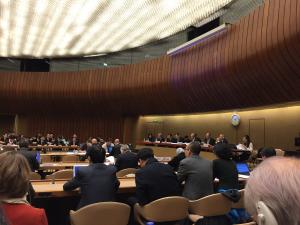In a lengthy document released today that concludes its review of China’s compliance with the Convention against Torture, a UN expert committee says it “remains seriously concerned over consistent reports indicating that the practice of torture and ill-treatment is still deeply entrenched in the criminal justice system.”
While noting some progress, the Committee, in its “Concluding Observations,” details extensive concerns about problematic practices including the prolonged period of pre-trial detention permissible without charge (up to 37 days and even longer in some cases versus the international standard of 48 hours maximum), denial of access to lawyers for indefinite periods of time in certain types of cases, holding detainees incommunicado in “residential surveillance at a designated place” (a legal euphemism for black jails), and the overarching power of police authorities, who both investigate suspects and maintain, without judicial oversight, detention centers where they are kept.
The experts also express deep concern that the mass crackdown on lawyers and defenders that began in July of this year would, aside from violating the human rights of the targets, “deter lawyers from raising reports of torture in their clients’ defence for fear of reprisals, weakening the safeguards of the rule of law that are necessary for the effective protection against torture.”
Throughout the oral exchange during the November 17 and 18 review sessions, and as reflected in the Concluding Observations, the experts challenged the many absurd claims made by China, expressing concern that solitary confinement is a “management method,” and rejecting as “highly improbable” China’s justification for the use of an “interrogation chair” as a “protective measure” to prevent detainees from escaping, inflicting self-harm, or attacking personnel. The Committee also notes “consistent reports” from “credible sources” (para. 42) that contradict China’s responses, including that which denies the existence of unofficial places of detention, as well as:
“Government acts of intimidation and reprisals against citizens do not exist in China” (para. 36); and
“[T]he allegations of unfair or cruel treatment to suspects or criminals from ethnic minority groups are groundless” (para. 40).
“The Concluding Observations send a clear message that the international community sees through China’s denial of documented facts and stonewalling in the face of expert scrutiny,” says Sharon Hom, Executive Director of Human Rights in China. “In a time when incommunicado detention is increasingly used against lawyers and other defenders, the Committee’s observations and recommendations provide a clear guide for what China must do to uphold its international obligations. They also serve as an important tool for those pressing for change on the ground.”
The Concluding Observations highlight numerous fundamental and crosscutting issues that enable torture in China. At the most basic level, the Committee again emphasized the lack of a comprehensive definition of torture, noting that the “serious discrepancies between the Convention’s definition and that incorporated into [China’s] domestic law create actual or potential loopholes for impunity.” Other legislative measures the Committee expressed concern over include the misuse of vague and broadly defined crimes such as “picking quarrels and provoking trouble,” and the all-inclusive category of “other conduct that disrupts court order” in various articles of the Law on Lawyers, Criminal Procedure Law, and in the newly amended article 309 of the Criminal Law.
Additional structural challenges identified by the Committee throughout the review process include:
Despite the vehement protest by the Chinese delegation in the previous review in 2008, challenging the inclusion of the June Fourth crackdown on the 1989 Democracy Movement in the scope of the review, the Committee again raised its concerns about the ongoing impunity for the “military suppression” of the Tiananmen Square protests of 1989, failure to investigate alleged acts of torture and to inform families of the whereabouts of relatives still in detention from the crackdown, and detention of those memorializing the event in subsequent years; and called for independent investigation, punishment of those found guilty, full reparation for victims and families, and protection against retaliation.
The Committee’s key recommendations include:
Legal measures
Access to relevant information and statistical data
Independent monitoring
The Committee requested China to provide by December 9, 2016 follow-up information relating to: restrictions on rights to access a lawyer and receive notification on custody, reported crackdown on lawyers and activists, independence of the investigations of torture allegations, and State secret provisions and lack of data requested. The Committee also invited China to provide information on its plans for implementing within the coming reporting period, some or all of the remaining recommendations in the Concluding Observations.
The Committee invites China to submit its next periodic report by December 9, 2019.
